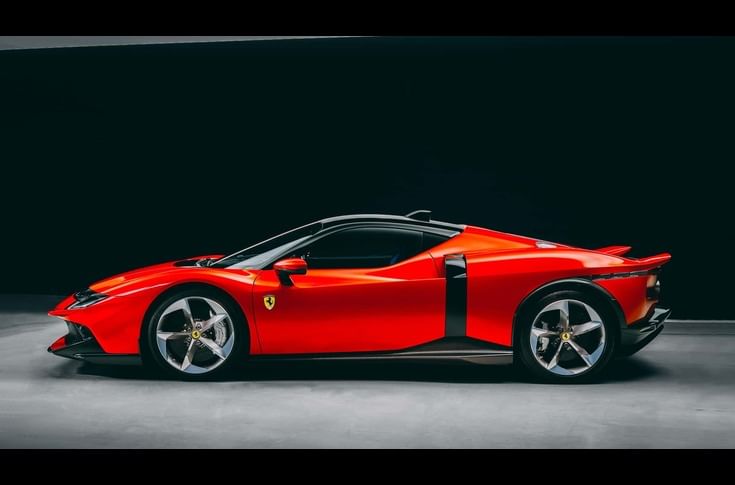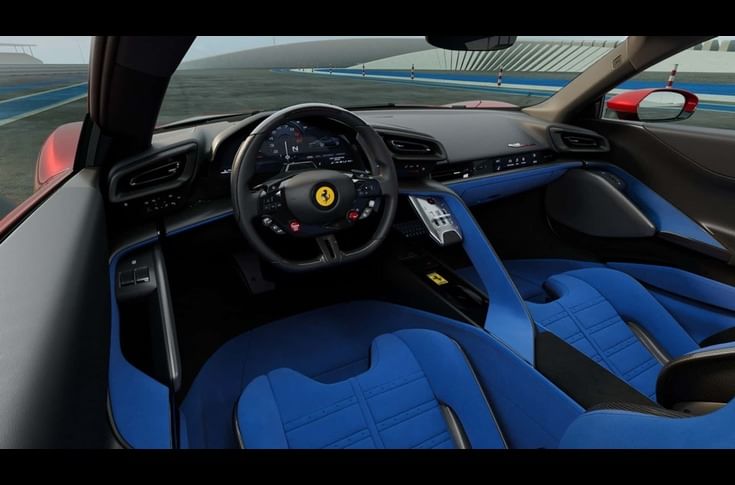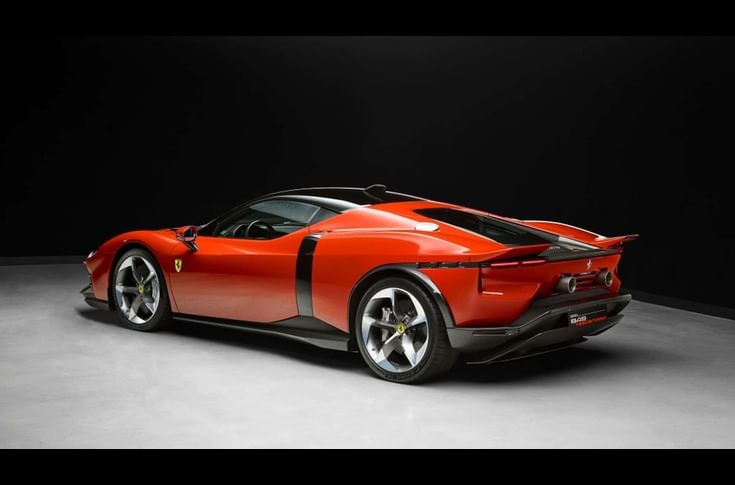The Ferrari 849 Testarossa has been officially unveiled as the successor to the SF90 Stradale, bringing back one of the most iconic names in Ferrari history. Due for customer deliveries next year in both coupe and Spider form, the new plug-in hybrid flagship combines a reworked twin-turbo V8 with three electric motors to deliver a staggering 1,035hp (772 kW). It revives the Testarossa badge, which last appeared on a production Ferrari in 1996, with sharper lines, a hybrid heart, and far more performance than ever before.
Although closely related to the SF90, the 849 Testarossa has been heavily updated inside and out. The V8 engine features new cylinder heads, exhaust manifolds, and the largest turbos ever fitted to a Ferrari production car. Alone, it produces 819hp (610 kW), while the electric motors add another 217hp (160 kW). Two motors sit on the front axle to provide torque vectoring up to 209kph, while a third motor between the engine and gearbox continues supplying power at higher speeds. The 7.45 kWh battery provides up to 24.9km of EV-only range, though in that mode power goes solely to the front wheels and top speed is limited to 128.7kph.
The new Testarossa’s performance eclipses even the SF90 XX Stradale. The coupe accelerates from 0 to 100kph in just 2.2 seconds and hits 200kph in 6.3 seconds, with top speed north of 330kph. The Spider is marginally slower due to its extra weight, but both versions use an eight-speed dual-clutch F1 gearbox as standard.
Ferrari has made it clear that the Testarossa name is not about retro design but about heritage and power. The original name dates back to Ferrari race cars of the 1950s, where it referred to the red-painted valve covers, and it became legendary in the 1980s with the flat-12 production supercar. According to Ferrari’s chief marketing officer Enrico Galliera, the name was chosen once again because the 849 Testarossa is the most powerful car in Ferrari’s regular lineup, not because of direct design inspiration from past models.
Stylistically, the 849 Testarossa departs from the retro playbook used by rivals like Lamborghini. Ferrari’s design center, led by Flavio Manzoni, has drawn inspiration from 1970s sports prototypes and aeronautics, resulting in sharp, geometric lines and a modern cab-forward stance. The large side intakes are integrated into the doors, the double-tail design recalls the 512 S, and the nose features a horizontal bridge element reminiscent of 1980s Ferraris. While some elements echo the SF90 and the Daytona SP3, the 849 stands apart as a distinctive new design rather than a facelift.
Inside, Ferrari has updated the cabin with a blend of retro cues and modern tech. The gear selector resembles a miniature gated manual shifter, while the steering wheel abandons touch controls in favor of physical switches. A central sail divides the driver and passenger areas, with both seeing digital screens that display performance data and driving information. Buyers can select between comfort-oriented or racing seats depending on their priorities.
The 849 Testarossa will also introduce new customization options. Two fresh exterior colors debut with the car: Rosso Fiammante, a metallic evolution of Rosso Corsa, and Giallo Ambra, a rich amber-inspired yellow. A matching interior Alcantara trim called Giallo Siena will also be available, alongside new wheel designs and Ferrari’s usual extensive personalization program.
At the top of the range sits the 849 Testarossa Assetto Fiorano, a lightweight, track-focused variant that sheds 30 kilograms through the use of titanium and carbon fiber. It features fixed Multimatic dampers, twin rear wings that triple downforce, and the option of Michelin Cup R2 tires. Unique liveries and bespoke interior options will further distinguish this model for enthusiasts who want maximum exclusivity. Ferrari has not yet revealed pricing, but the 849 Testarossa is expected to start well above the SF90’s USD 470,000 base price. International customer Deliveries of both the coupe and Spider are scheduled to begin next year.
Ferrari has not yet revealed pricing, but the 849 Testarossa is expected to start well above the SF90’s USD 470,000 base price. International customer Deliveries of both the coupe and Spider are scheduled to begin next year.
